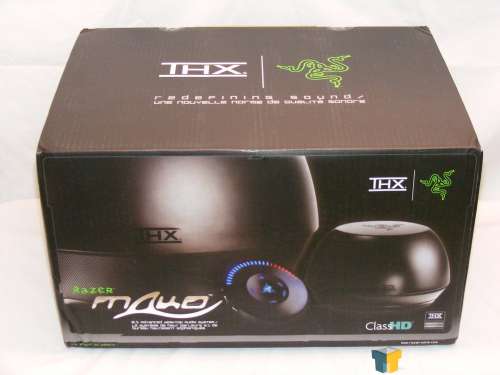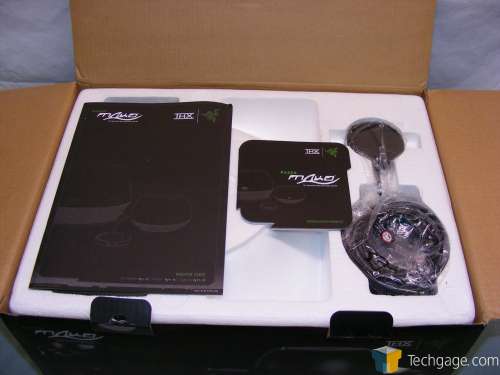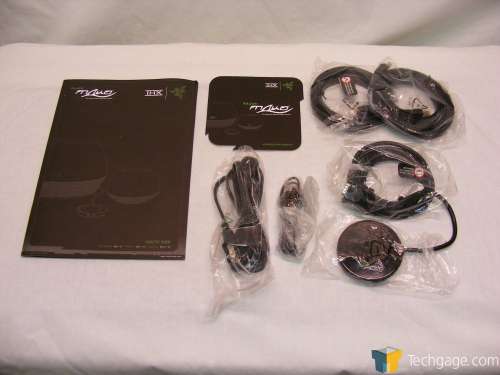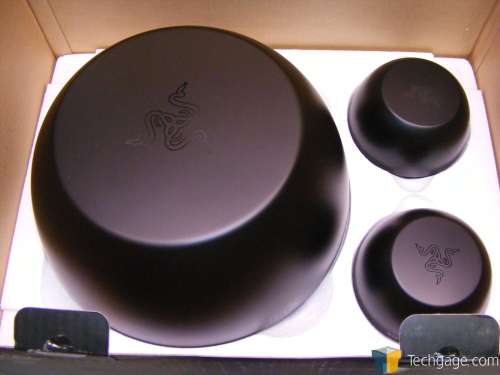- Qualcomm Launches Snapdragon 4 Gen 2 Mobile Platform
- AMD Launches Ryzen PRO 7000 Series Mobile & Desktop Platform
- Intel Launches Sleek Single-Slot Arc Pro A60 Workstation Graphics Card
- NVIDIA Announces Latest Ada Lovelace Additions: GeForce RTX 4060 Ti & RTX 4060
- Maxon Redshift With AMD Radeon GPU Rendering Support Now Available
Razer/THX Mako 2.1-Channel Speaker System
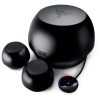
Razer is well-known for producing high-quality peripherals, but audio can be an entirely different bag. Our concerns over their new found venture can be set aside though, as the tag team effort between them and THX helped build an amazing 2.1 system that’s actually worth its $400 price tag.
Page 2 – First Impressions
The Razer/THX Mako speakers come in some classy packaging, as we’ve already come to expect from Razer. The box is trimmed in typical Razer fashion, with some additional commentary from Robert Krakoff about how the Razer/THX Mako speakers promise to “redefine the state of the art” in loudspeaker systems, and information about how technologies like “Ground Plane” and “Slot Speaker” contribute to an improved listening experience. Sweet; we can’t wait.
Opening the top of the box, you’ll see that the included accessories and cabling are nestled in the upper Styrofoam shell, along with the control pod and instruction manual. In addition to the Mako satellites and subwoofer, you get two speaker cables with RJ-45 terminations, the control pod (which connects via a VGA-style connector, hence the warning to NOT connect it to your PC’s VGA port, and likewise the warning NOT to connect the speaker cables to RJ-45 network jacks), a two-prong power cable, and a rather unremarkable 35mm stereo miniplug cable for connecting the speakers to your sound card or your motherboard’s onboard line-out jack.
The Razer/THX Mako satellite speakers and subwoofer are packed between the two Styrofoam shells, in closed-cell foam bags. Despite the fact that the enclosures are made of plastic instead of the pressed-wood or fiberboard enclosures we’ve grown accustomed to in high-end PC speaker systems, all three speakers have a bit of heft to them, which tip us off to two things – that the speakers use ferrite magnets, most likely, and big ones at that. Despite the fact that the enclosures are made of plastic, they don’t seem flimsy or cheap. The base of each speaker is rimmed with a perforated steel mesh grille.
The Razer web site’s ‘technical specifications’ page reads like a features/benefits chart, and doesn’t give much in the way of numeric quantization of the Mako system’s performance characteristics, besides some wattage and system frequency response numbers. So here’s what I was able to pull out of the product literature, as well as what I was able to determine on my own.
- Specifications
- Type: 2.1 Channel (two satellite speakers, one subwoofer)
- Input: Analog 2-Channel, Stereo
- System Inputs: Main, Line1, Line2
- Subwoofer Configuration: Sealed, Self-Amplified
- Subwoofer Driver: 8″ Long-Excursion, Poly Cone with Rubber Surround
- Subwoofer Power: 100W, DSP-processed (Electronically assisted sealed design)
- Satellite Configuration: Sealed, THX Ground Plane design, Passive 2-way Crossover
- Satellite Drivers: 3″ Poly Cone Midbass with Rubber Surround, 1″ Aluminum Dome Tweeter on THX Slot Speaker aperture
- Satellite Power: 100W/channel, DSP-Processed (Equalization, limiting)
- System Frequency Response: 25-20,000Hz (40-18,000Hz +/-2.5dB)
- System Power Output: ClassHD, 300W RMS
- Host System Requirements: 3.5mm or stereo RCA output
Beyond their radical styling and THX-developed acoustic technologies, the Razer/THX Mako 2.1 speakers aren’t functionally much different from your typical high-end 2.1-channel PC speaker system. It’s the THX ‘secret sauce’ of advanced technologies and meticulous tweaking that’s expected to make the difference here, so let’s next look at the technologies of the Mako speakers in detail.
|
|
Support our efforts! With ad revenue at an all-time low for written websites, we're relying more than ever on reader support to help us continue putting so much effort into this type of content. You can support us by becoming a Patron, or by using our Amazon shopping affiliate links listed through our articles. Thanks for your support!




